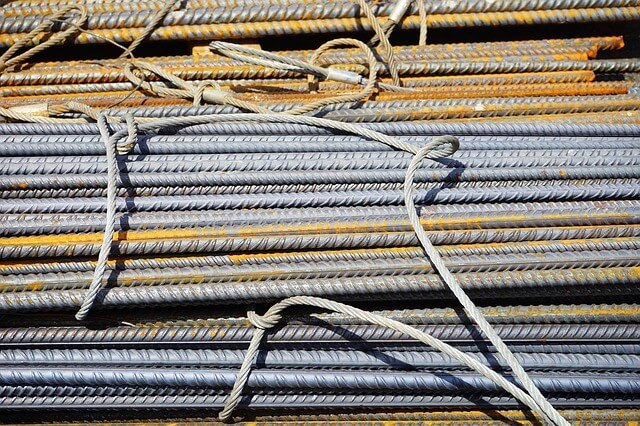It took millions of years before thinking humans walked the Earth but only a few thousands for them to dominate and modernize it. Thanks to a genius unique to the so-called homo sapiens, our civilization immediately rose to Type 0 in the KARDASHEV Scale. It won’t be long before we reach halfway through to Type 1, which is categorized by the capability to harness the total energy of our planet.

Before we get too scientific about the breakthroughs of our civilization, let’s take a step back to see where we owe most of them from. In the last few thousand years, we’ve managed to harness one of the world’s most abundant resources—minerals. From them we were able to produce one of the materials that make up today’s world—metals. The discovery of metals literally jumpstarted the industrial age.
The Use of Metal in Construction
Of the plethora of applications metals are used for, construction remains its largest beneficiary. Construction technology has come a long way since the days when structures were mostly made from carved or cast stones. Back then it was almost impossible to build multiple-story dwellings and manors due to the lack of reinforcing materials in concrete. The tools used for construction were also not strong enough to handle tough structural materials, and so the entire concept of construction was very limited.
When copper was discovered some 10,000 years ago, it was only utilized for basic applications such as making weapons, cookware, and jewelry, and for many good reasons. Not only was extracting copper too complex at the time, but the metal doesn’t really possess characteristics suitable for the heavy construction applications required to kick-start modernity. It took a few thousand years before iron, which makes up most of today’s high-rises and bridges, was discovered.
Common Metals Used in Construction
There are 91 metals in the Periodic Table of Elements. This means over 77 percent of the types of material that make up the Earth is metal. Only a handful of these metals, however, have apparent practical uses. Here’s a short list of metals used in construction.
-
Steel
– The most prominent among metallic construction materials, steel is vastly used as reinforcement for concrete. It exhibits high tensile strength, which is useful in countering tension forces within a structure. This metal is made of iron and a number of different elements. Carbon, its main additive, improves not only its strength and durability, but also its corrosion resistance, because of course iron is known to be susceptible to corrosion.
Steel has many different types, each of which suits specific construction applications. Perhaps the most prominent type is stainless steel, which is produced by combining steel with a little bit of chromium. It has very high corrosion resistance, making it a preferred material across a vast range of applications, particularly those that involve exposure to corrosive environments. Galvanized steel follows, which resists corrosion through its zinc coating.
-
Iron
– Apart from steel, there are other valuable materials than can be manufactured out of iron. For instance cast iron, pig iron, and wrought iron, which are popular materials for making plumbing tubes and pipes. They also play some crucial load-bearing roles in construction but not as critical as those of steel.
-
Aluminum
– Of the countless non ferrous metals in building construction, aluminum is the second most prominent, next to steel. Its natural corrosion resistance, ductility, and malleability make it perfect for cladding systems on walls that require fewer joints. It is also used for construction applications that involve exposure to corrosive and humid environments. Due to aluminum’s high durability, it is also preferred for structures that are difficult to access and maintain, such as lighting and antenna towers.
-
Lead
– Although it possesses toxic qualities, lead is still widely used for an array of construction applications. Its toxicity is neutralized by alloying other elements to it. At present, thanks to its ductility, lead is commonly used for making roofs and cladding materials. Most linings for cornices, tanks, copings, gutters and downpipes, flashing, and other metallic components of the roofing system also have lead in them.
-
Copper
– If you rank metals according to their flexibility, copper would probably get the top spot, and that’s not an overstatement. Examine the properties of copper and you’ll realize that it suits more applications than those of most other popular metals combined. Ductility, malleability, electrical conductivity, machinability, and many other mechanical properties make it a super metal. In construction, it is commonly used in the plumbing system, particularly tubes and conduits that convey gas and hot water. Its alloys are also utilized for cladding surfaces.
-
Brass
– Copper has many different alloys, and that includes one of the most well-known metals—bronze. But one copper-based metal stands out in terms of usefulness for construction application—brass. You see this metal in different forms from the hinges and knobs of doors to the trims and railings of stairways. They have major part in the complete of a building’s exterior and interior.
The metal industry has grown so big since its advent many thousand years ago and has seen no major decline since, thanks to our insatiable desire for advancement. Unfortunately, like any other products, metals vary in quality and that’s mainly because they are quarried and manufactured by different companies. If ever you are looking to using metals, especially non-ferrous ones, in your future craft or construction project, be careful where you get your where to buy copper sheet metal or bronze bars from. Make sure it comes from a certified supplier like Rotax Metals who utilizes the latest technologies in their foundries. They sure have the highest quality products that can ensure the success of your projects.

